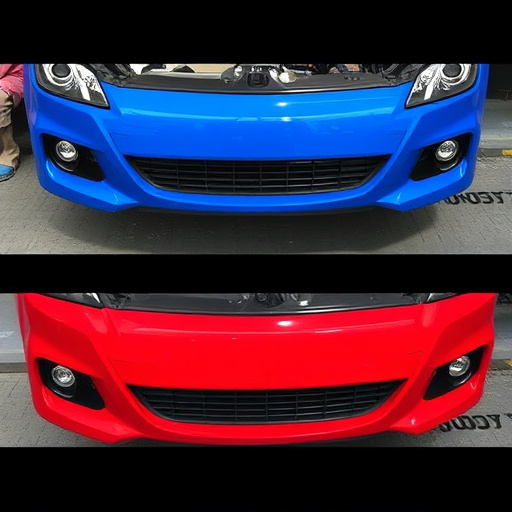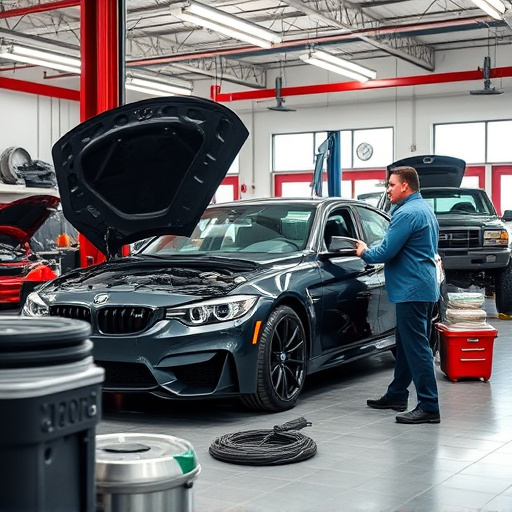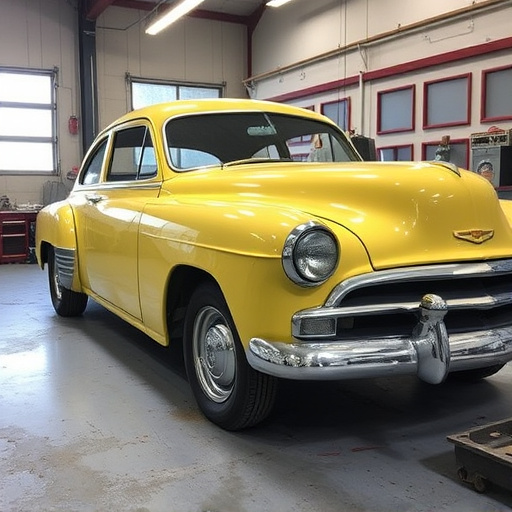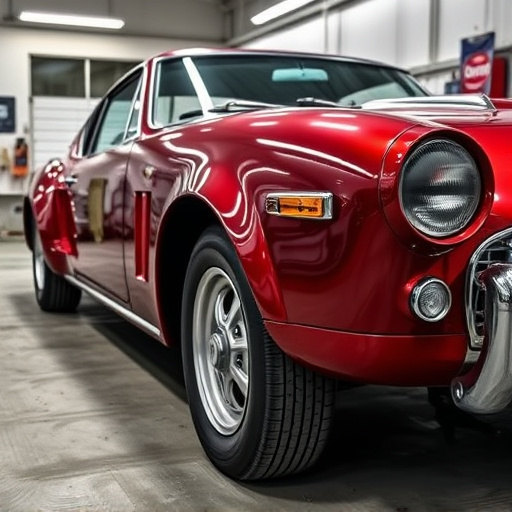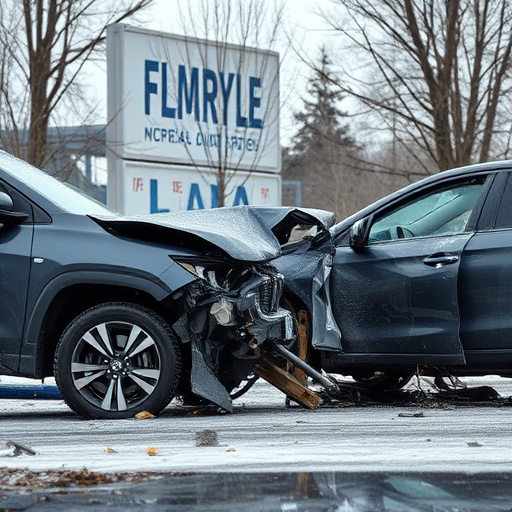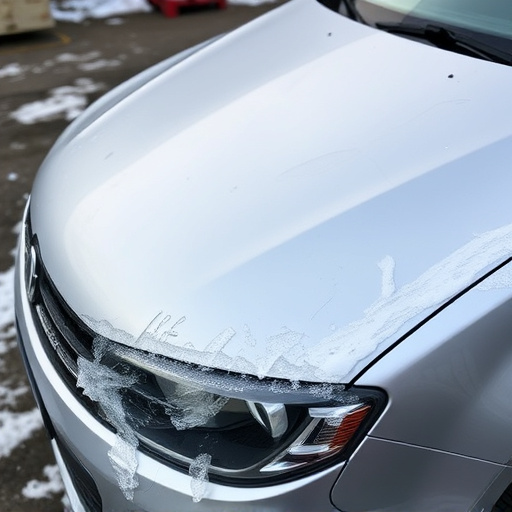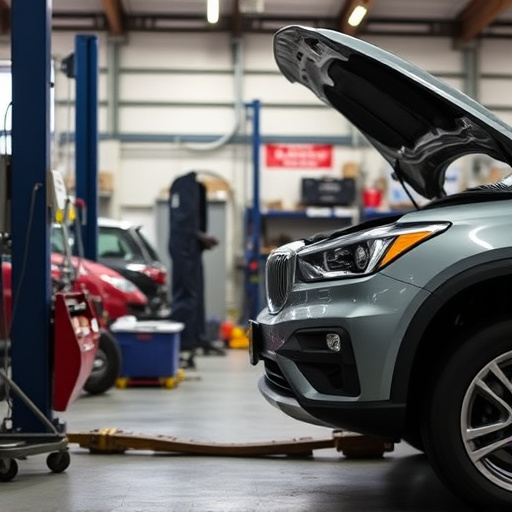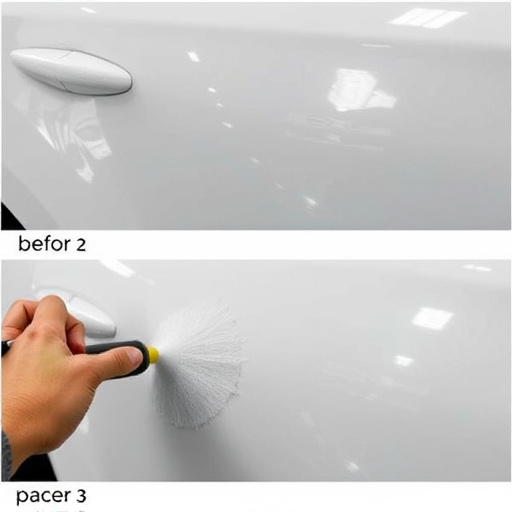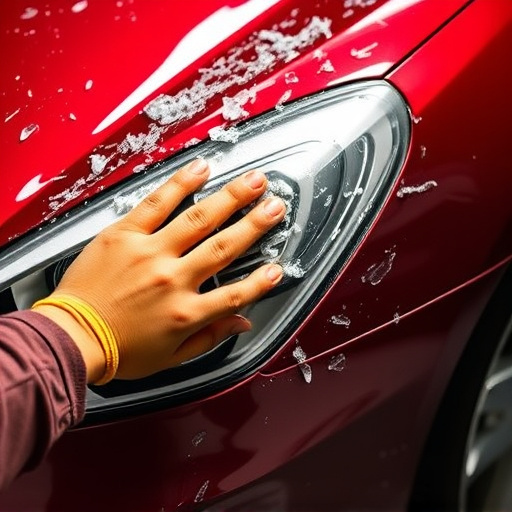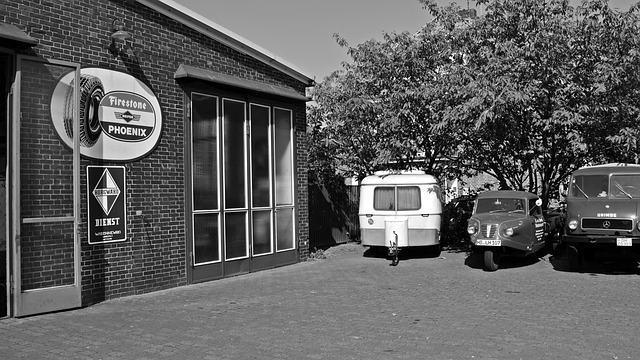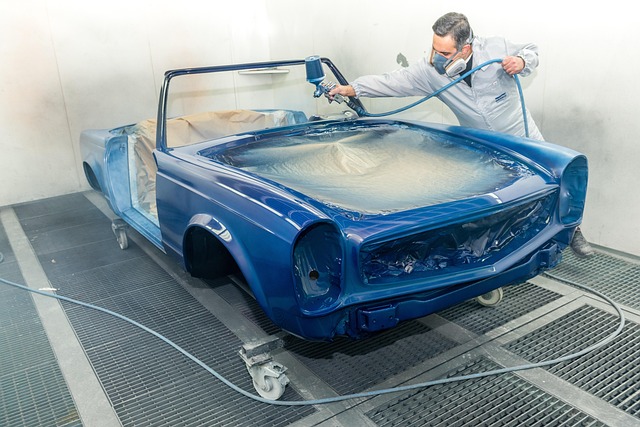Bumper replacement involves disassembly, inspection, repair, and painting. Timelines vary based on damage complexity, shop resources, and vehicle type. Skilled technicians streamline processes, use advanced tools, and optimize inventory for efficient, high-quality replacements in today's competitive market.
Discover how long your bumper replacement might take! This insightful guide breaks down the process, explores common factors influencing installation time, and offers tips to optimize efficiency. From understanding the steps involved to identifying potential delays, you’ll gain valuable insights into the bumper replacement process. Learn about best practices for faster repairs and get ready to restore your vehicle’s exterior with confidence.
- Understanding the Bumper Replacement Process
- Common Factors Affecting Installation Time
- Optimizing Efficiency for Faster Repairs
Understanding the Bumper Replacement Process

Understanding the bumper replacement process is key to knowing how long it takes. The first step involves removing the damaged or defective bumper from your vehicle. This requires careful disassembly, often including detaching various components connected to the bumper like sensors, lights, and reflectors. Once the old bumper is removed, the underlying structure needs inspection to ensure there’s no hidden damage.
The next phase involves preparing the surface for new bumper installation. This might involve patch repairs if there are additional dents or scratches. After the car body is ready, the new bumper is fitted, making sure all alignment and mounting points are correctly positioned. Finally, a layer of car paint services may be required to match the vehicle’s original color and ensure a smooth, seamless finish, especially after a car collision repair.
Common Factors Affecting Installation Time

The installation time for a bumper replacement can vary significantly based on several common factors. One of the primary determinants is the complexity of the repair process, which in turn depends on the type and severity of the damage to the bumper. Simple replacements involving minor dents or cracks might take as little as an hour or two at a well-equipped auto collision center. However, more intricate repairs that require welding, painting, or replacement parts can extend the process by several hours, sometimes up to half a day or more.
Another crucial factor is the availability and efficiency of the repair shop’s staff and facilities. Fleet repair services often have dedicated teams with specialized skills, which can streamline the bumper replacement process. Conversely, a collision repair center with limited resources or inexperienced technicians might face delays due to backlogs or skill constraints. Additionally, the type of vehicle also plays a role; complex models with intricate bumper designs may necessitate more time for precise alignment and fitting.
Optimizing Efficiency for Faster Repairs

In today’s fast-paced world, optimizing efficiency is key to delivering swift and quality bumper replacement services. Skilled technicians understand that time is money, especially in the vehicle repair services industry. By implementing streamlined processes and utilizing advanced tools, many reputable auto body shops can complete bumper replacements in a fraction of the time it used to take. This efficiency isn’t just about speed; it also ensures that customers receive top-notch care without compromising on safety or quality.
A well-organized workshop, equipped with specialized tools for collision repair, allows for seamless workflow. From the initial assessment and disassembly to the precise replacement and final inspection, every step is meticulously executed. Additionally, having a system in place for parts ordering and inventory management further streamlines the process, enabling mechanics to quickly access the necessary components for bumper replacements, thereby reducing overall turnaround time.
Bumper replacements, while seemingly straightforward, can vary in duration based on several factors. Understanding these elements is key to managing expectations and optimizing repair efficiency. By streamlining the process and addressing common challenges, many reputable auto body shops can complete a bumper replacement in 3-5 hours, significantly reducing downtime for vehicle owners. This quick turnaround time is a testament to the importance of efficient practices within the automotive industry.
